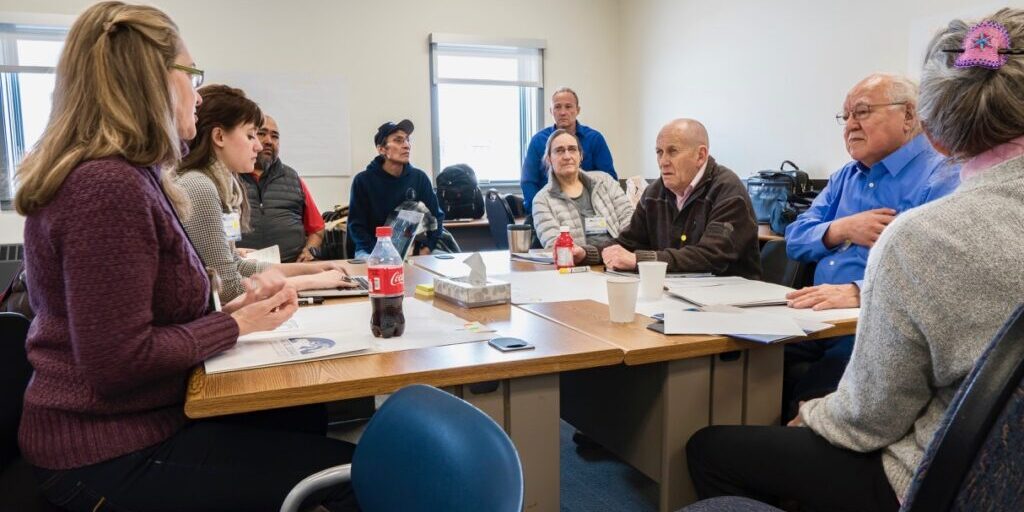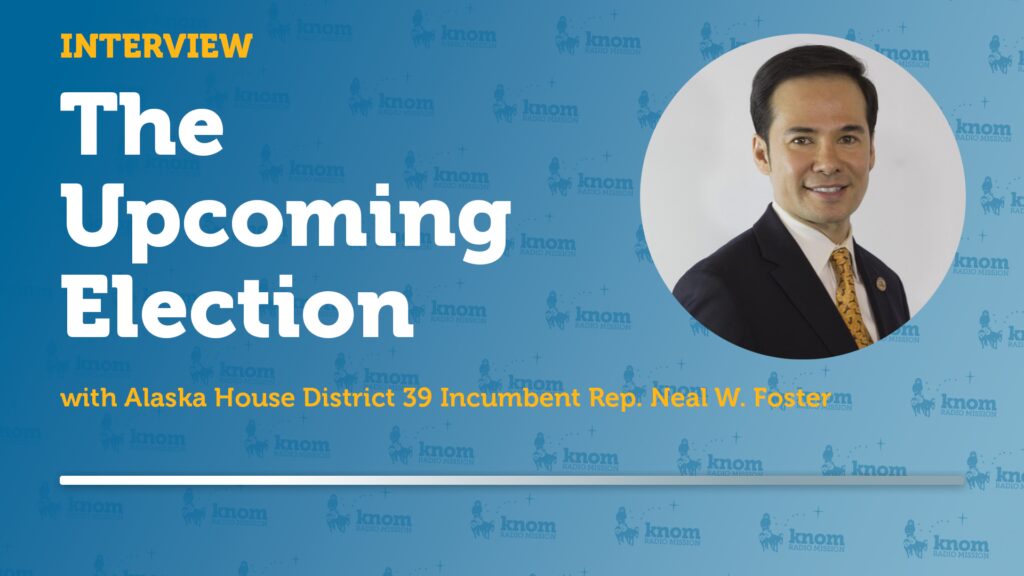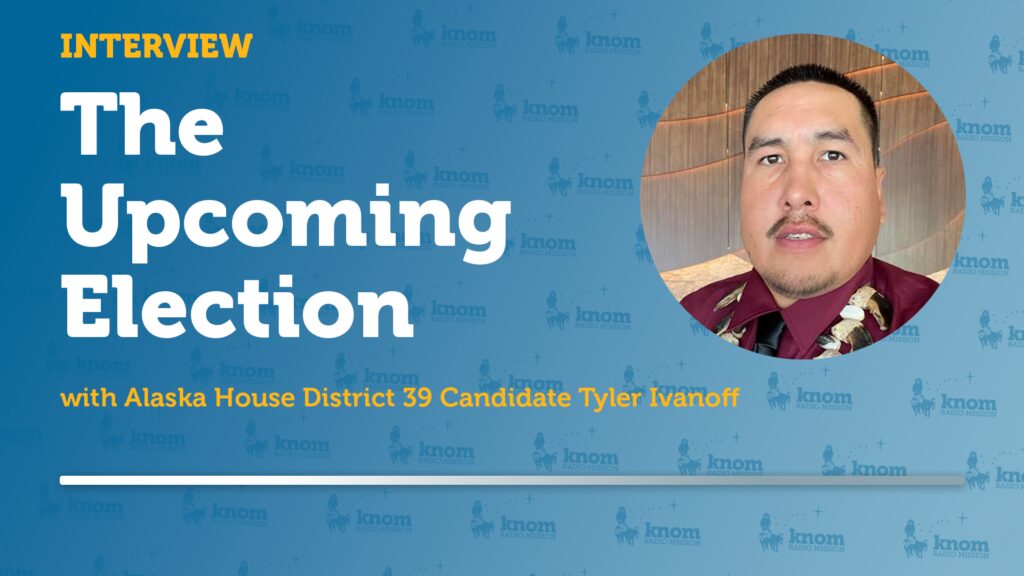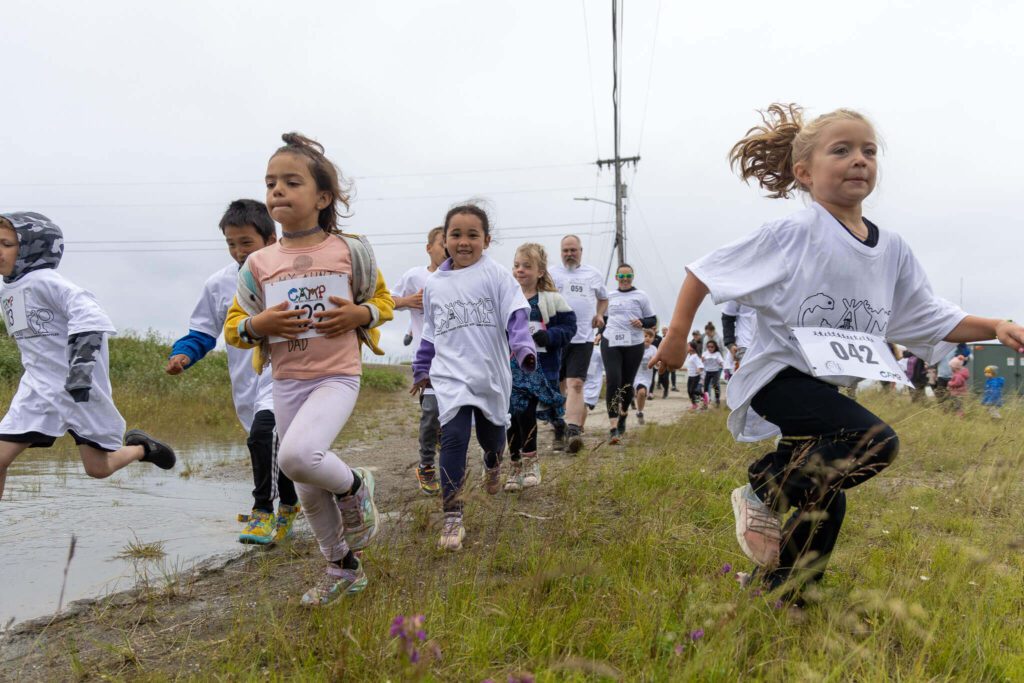The Arctic is changing, and the people living there are trying to change with it. A conference in Nome last week brought together leaders from Alaska Native communities to discuss the challenges — and opportunities — facing an evolving Arctic.
KNOM’s Gabe Colombo reports.
Leaders of Alaska Native communities have very different ideas about where the Arctic is headed. But they generally agree on one thing:
“We are now in the time where we are living two lives.”
That’s Don Long. He’s a former mayor of Utqiagvik.
“One, trying to be a subsistence hunter, and the other one, trying to be working the 8-to-5 type of work that job requires today.”
That tension was front and center at the Arctic Futures conference last week at UAF Northwest Campus. It was hosted by the Arctic Domain Awareness Center (ADAC), which does research and community engagement for the U.S. Coast Guard.
About 50 people from the Bering Straits region and the Northwest Arctic and North Slope boroughs were in Nome for the two-day workshop. They compared scenarios for 20 years into the future based on different variables, including how much ship traffic increases and how much erosion worsens.
On top of erosion, the land is also changing due to mining projects popping up throughout the Arctic. For some, it’s a way to make a living. Here’s Nome elder Perry Mendenhall:
“In my family, I have gold miners. They make a living gold mining just like other people. Even when they were told not to mine, they mine, to feed their people.”
Arlene Soxie is an elder from White Mountain. She’s against mining.
“It grieves me to see how disrupted our land is. All the digging that was done looks very ugly to me. There are areas where we used to go pick berries, but it’s not available anymore, because the land has been destroyed.”
The ocean is in flux, too. This winter saw the second-lowest Arctic sea ice extent on record. Last year saw the lowest. Here’s Nome elder Charlie Brower:
“Back in 1992, I used to feel comfortable going to Barrow by May the 10th to participate in whaling. The last few years, if I’m not there by the third week of April, I’ve missed most of the migrations of the whales.”
There are some upsides to more development in the Arctic, like better health care and fiber-optic communications.
Gordon Brower hopes to see more improvements like those. He’s the director of planning and community services for the North Slope Borough.
“With a housing crisis because of lack of opportunity — it’s like a cycle that we need to break, with economics. Economic is the buzz word.”
He sees responsible resource development in the Arctic as a way to break that cycle. And he wants to make protecting oil reserves in the Beaufort Sea a national security priority.
Elim elder Robert Keith says designing infrastructure around how nature behaves could help communities avoid the worst consequences — and price tags — of a changing climate. But he says that kind of knowledge only comes with years of experience living in the Arctic.
“We’ve always been very adaptable people. We’ve had to live like that. That’s part of our nature. We’re going to survive, but I don’t think some of the places we live at will.”
For now, Nome will move forward with exploring a deep-draft port that would bring more ship traffic through the Bering Strait. And down the coast, people like Robert Keith, will watch the sea ice retreat and the coast continue to erode.
Image at top: Leaders of Arctic communities discuss possible scenarios for the future of the region at the Arctic Futures conference (photo: Kenton Media, used with permission).







